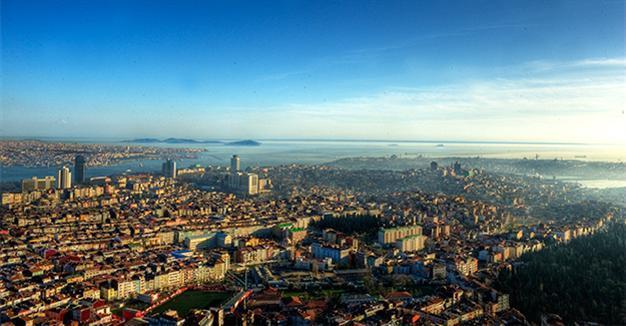12 mln Turkish people internally migrate in five years
ISTANBUL

More than 12 million people moved from one Turkish city to another between 2009 and 2014, according to data compiled by the Turkish Statistics Institute (TÜİK), while a separate report defined Istanbul as a megacity with a population that could swell to 17 million by 2030.
Over the five year period ending in 2014, a total of 12.3 million people changed cities in Turkey, according to the data. The top three cities subjected to in-country migration were Istanbul, Ankara and the Mediterranean province of Antalya, the data showed, while the top three cities persons emigrated from were in the eastern provinces of Van, Ağrı and Erzurum.
Having remained the most attractive city in migration terms, Istanbul has taken in 2,151,415 migrants from across the country, while the number of people who have moved out of the metropolis was stated as 1,815,932, according to the data.
In total, 52 Turkish cities saw their numbers grow with more people moving to the city than away, the data showed.
Meanwhile, in a separate report on megacities released recently by Allianz, an international insurance company, Istanbul was listed as the 15th largest megacity in the world with a population of some 14.16 million.
The metropolis will see a population growth of some 2.53 million people by 2030 to reach nearly 17 million, the report said, adding the Turkish megacity would be the 20th most populated city by that time.
The report also provided figures for other megacities from around the world, noting several megacities would see growth at exponential rates, reaching country-sized populations.
“By 2030, two-thirds of the world’s population will live in cities; many of them in megacities - conglomerations with ten million inhabitants or more. The trends of tomorrow are being born in these cities and we will need to find answers to the enormous challenges they pose,” the report quoted Axel Theis, a member of the Allianz Management Board for Global Insurance Lines and Anglo Markets, as saying.
Noting the number of megacities in the world was currently 29, the reports said the number of megacities with more than 10 million inhabitants was expected to grow to over 40 by 2030.
“There are already 29 megacities and the number is growing fast. The concentration of inhabitants, buildings and infrastructures is rising exponentially as available space continues to shrink. Many of these cities are located in low-lying coastal regions, which are especially vulnerable to the effects of extreme weather and climate change. At the same time, life expectancy is increasing in many regions of the world, above all in Asia. In 2030, 15 percent of the world’s population will be older than 60. This trend is also taking place in megacities,” the report said.
Addressing the implications of growing city populations, the report said, “As living conditions in large metropolises change, so do the needs of their inhabitants and we, as insurers, are going to have to meet them; For example, in the case of managing the risk of natural catastrophes or supporting infrastructure projects.”
The report also depicted predictions of how urban life will be for the residents of such cities in the future, depicting a substantial increase in disbandment of traditional families as well as demand for living space in future.
“In the megacity of the future more and more people will live in smaller households because the traditional family unit is becoming increasingly disbanded. The demand for living space will therefore rise substantially. This challenge can be countered with innovative technologies, such as 3D-printed houses,” the report said.
 More than 12 million people moved from one Turkish city to another between 2009 and 2014, according to data compiled by the Turkish Statistics Institute (TÜİK), while a separate report defined Istanbul as a megacity with a population that could swell to 17 million by 2030.
More than 12 million people moved from one Turkish city to another between 2009 and 2014, according to data compiled by the Turkish Statistics Institute (TÜİK), while a separate report defined Istanbul as a megacity with a population that could swell to 17 million by 2030.